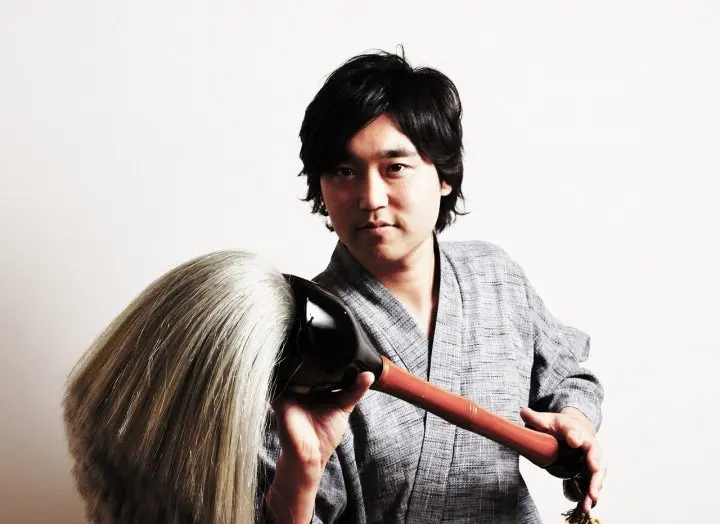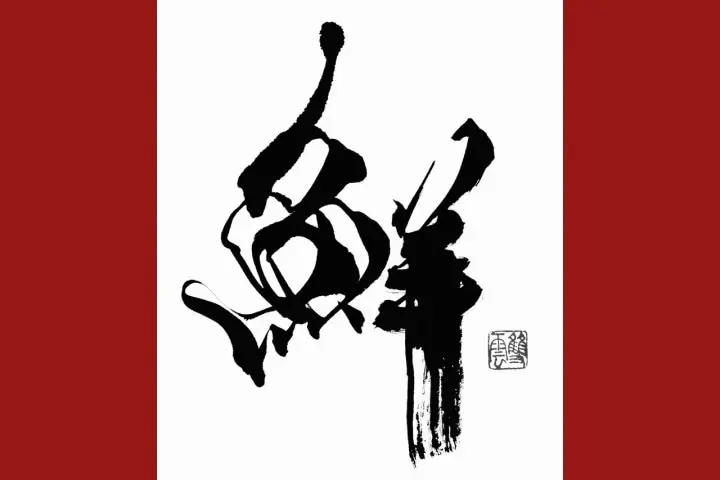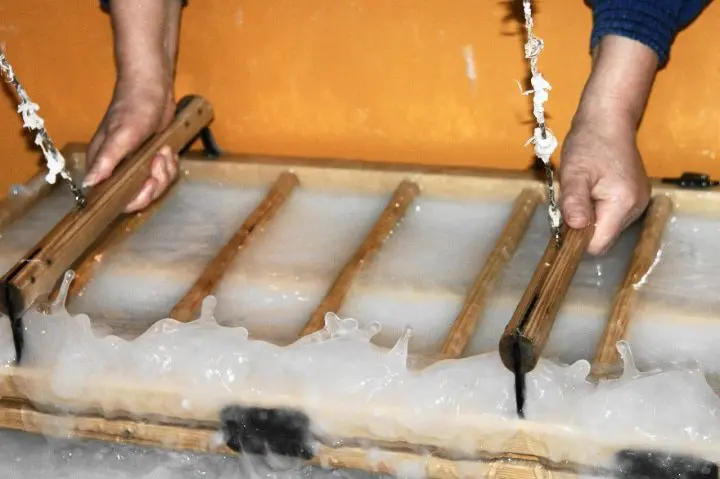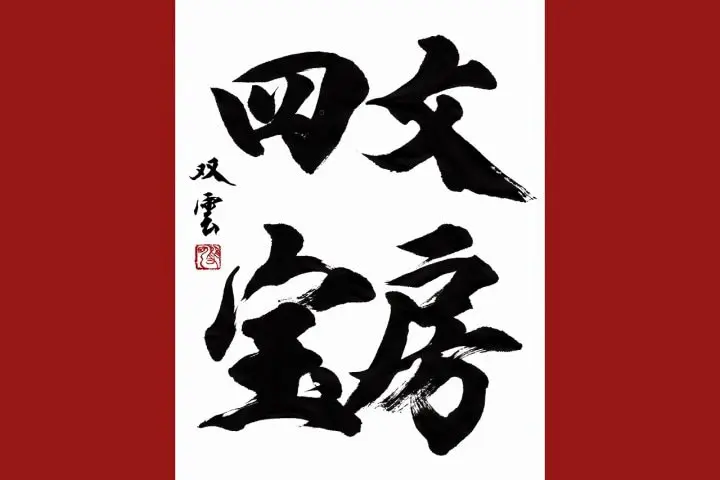The Appeals of Calligraphy Paper - Japanese Culture and a Joyful Heart

In this series of essays, calligrapher Souun Takeda introduces aspects of Japanese culture. The fifth installment is about the special paper used in calligraphy, which helps to create the blurred and scratched strokes essential to the art.
Calligrapher and Contemporary Artist Souun Takeda

Picture courtesy of Souun Takeda Office
Souun Takeda is a calligrapher and contemporary artist from Kumamoto Prefecture, born in 1975. After working as a company employee, he started his career as a calligrapher in 2001 and has produced various title credits for TV programs and movies. Currently, he hosts calligraphy workshops and exhibitions all over the world.
In this essay series, Souun talks about the essence of Japanese culture through calligraphy.
Read also
Part 5: The Special Paper used in Calligraphy

The word "sen" (meaning "vivid") is written in a scratchy, cursive style. Picture courtesy of Souun Takeda Office
A core phrase in calligraphy is "bunbo shiho," meaning "the four treasures of stationery." This phrase refers to paper, India ink, suzuri (ink stone), and the writing brush. In this article, I will talk about the unique type of paper used in Japanese calligraphy.
If you just want to write clear letters, copy paper and marker will do. In calligraphy, on the other hand, scratched or blurred strokes are important elements in the art.
To create distorted, three-dimensional letters, India ink, which contains a high amount of moisture, and a special kind of paper are used.
The paper used in calligraphy is a little different from washi (Japanese paper). High-quality sheets are very delicate, and must be handled gently, as they tear easily.

The word "nami" (meaning "wave") is written in a blurred style. Picture courtesy of Souun Takeda Office
With too much ink on the brush, the strokes will be blurred. Without enough ink, the characters will look scratchy. A subtle balance between the two conditions is required.
In the age of speed and efficiency, calligraphy calls for gentleness and delicacy and uses soft paper. The fragility of the paper teaches us to act in a gracious manner. This is one of the reasons why the act of writing calms the mind.
Let's take a look at how the paper is made.

Japanese papermaking. Photo by PIXTA.
Calligraphy paper is made by artisans using barks of kozo (paper mulberry) and mitsumata (paper bush). After the fibers are separated from the bark, the paper is produced with care, using very pure water. As papermaking requires a large amount of crystal-clear water, most workshops are located at the foot of mountains.
I've tried my hand at papermaking, and quickly realized how difficult it is. The sheets I made tore easily, and often come out uneven. I have nothing but respect for the artisans. When writing, I can immediately feel when the paper is made with an exquisite balance of fibers. Even the color of the ink changes!
The work of a top-class artisan looks beautiful and feels wonderful to write on. In the microscopic world, ink particles mixed with water molecules permeate into the paper fibers. Calligraphy papers are made to optimize this permeation.
Japanese traditional papermaking is truly impressive. The pleasantness I feel when putting a brush on paper is one of the things that has kept me writing for more than forty years.
In the next essay, I'll be writing about the other three treasures, so stay tuned!
Letters of the Day: Bunbo Shiho

"Bunbo shiho" ("The Four Treasures of Calligraphy"). Work by Souun Takeda
For a calligrapher, the bunbo shiho (brush, ink, suzuri, and paper) truly are treasures. I wrote the letters above with a renewed gratitude to my tools.
Born in 1975 in Kumamoto. After graduating from the Tokyo University of Science, we worked for NTT, then started his career as a calligrapher. He has produced various title cards for TV programs and movies, including TV series by NHK. In 2020, he held his first individual contemporary art exhibition. Currently, he holds calligraphy workshops and exhibitions all over the world.






























![[Kanazawa] Enjoy the world of gold leaf to the fullest in the city with the highest production volume in Japan](https://resources.matcha-jp.com/resize/720x2000/2025/11/12-249564.webp)
![[2026] Family Winter Trip to Suzuka Circuit! – For Both Day trips and Overnight Stays!](https://resources.matcha-jp.com/resize/720x2000/2025/12/26-254097.webp)
![[Northern Okinawa] 4 Recommended Cosmos Fields in Okinawa | Sunflowers and Cherry Blossoms in the Same Season!](https://resources.matcha-jp.com/resize/720x2000/2024/08/12-192028.webp)

